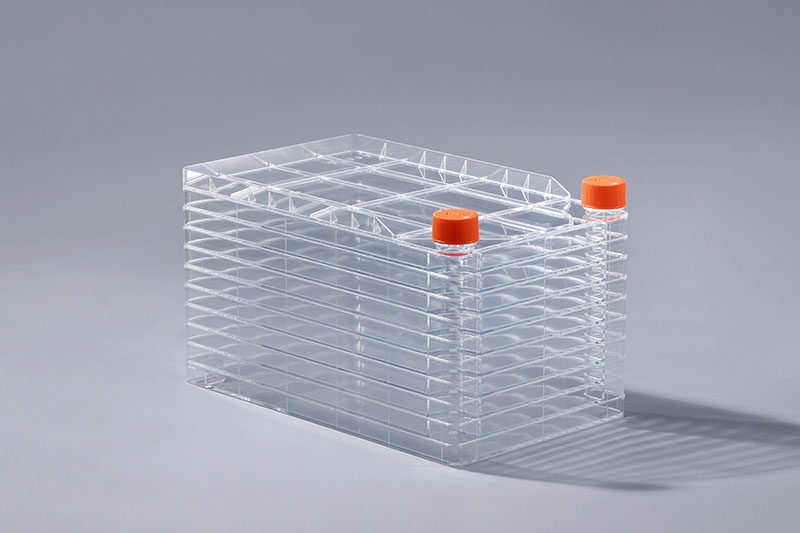Cell factorysa používajú hlavne na kultiváciu adherentných buniek vo veľkom meradle, ako je vakcína proti hepatitíde A, vakcína proti hepatitíde B, vakcína proti ovčím kiahňam atď. Pri kultivácii buniek niekedy zistíme, že bunky ťažko priľnú k stene. Aký je dôvod?
Po prvé, existuje veľa dôvodov pre fenomén nepriľnavosti, keď sa bunky kultivujú v bunkovej továrni, ktoré možno analyzovať a vyriešiť z nasledujúcich hľadísk:
Nadmerné trávenie trypsínu: Trypsín pomáha bunkám tráviť. Ak je trávenie nadmerné, aktivita buniek sa značne poškodí a bunky budú plávať. Dá sa to kontrolovať skrátením času trávenia alebo znížením koncentrácie trypsínu.
Kontaminácia mykoplazmami: bunky sú citlivé na prostredie. Ak operátor nebude dbať na hygienu, prípadne dôjde ku kontaminácii pracovného prostredia a experimentálneho zariadenia, dôjde ku krížovej kontaminácii medzi bunkami a k fenoménu non-adherencie. Ak sa zistí kontaminácia mykoplazmou, kultúru okamžite zlikvidujte. Bunkové starnutie: Bunkové starnutie je súhrnom degeneratívnych zmien v bunkách, keď organizmus starne, čo spôsobuje, že bunky strácajú priľnavosť, ak sú pred pasážovaním konfluentné. Čerstvo nasadené bunky možno rozmraziť a znovu kultivovať. Okrem toho, ak je počiatočná koncentrácia naočkovaných buniek príliš nízka alebo príliš vysoká, ovplyvní to aj adhézne vlastnosti buniek a úprava vhodnej koncentrácie naočkovaných buniek môže vyriešiť tento problém. Pred použitím bunkovej továrne by operátori mali vykonať dobrú dezinfekciu seba a prostredia, aby sa vyhli rôznej kontaminácii ovplyvňujúcej proces bunkovej kultúry.
Cellular Aging: Cellular aging is the sum of degenerative changes in cells as the organism ages, causing cells to lose their adherence if they are confluent before passage. Freshly seeded cells can be thawed and re-cultured.
In addition, if the initial concentration of inoculated cells is too low or too high, it will also affect the adherence properties of cells, and adjusting the appropriate concentration of inoculated cells can solve this problem. Before using the cell factory, operators should do a good job of disinfection of themselves and the environment to avoid various contamination affecting the cell culture process.
The FAI climbed 5.9 percent year-on-year in the first 11 months of 2018, quickening from the 5.7-percent growth in Jan-Oct, the National Bureau of Statistics (NBS) said Friday in an online statement.
The key indicator of investment, dubbed a major growth driver, hit the bottom in August and has since started to rebound steadily.
In the face of emerging economic challenges home and abroad, China has stepped up efforts to stabilize investment, in particular rolling out measures to motivate private investors and channel funds into infrastructure.
Friday's data showed private investment, accounting for more than 60 percent of the total FAI, expanded by a brisk 8.7 percent.
NBS spokesperson Mao Shengyong said funds into weak economic links registered rapid increases as investment in environmental protection and agriculture jumped 42 percent and 12.5 percent respectively, much faster than the average.
In breakdown, investment in high-tech and equipment manufacturing remained vigorous with 16.1-percent and 11.6-percent increases respectively in the first 11 months. Infrastructure investment gained 3.7 percent, staying flat. Investment in property development rose 9.7 percent, also unchanged.
 English
English



















































